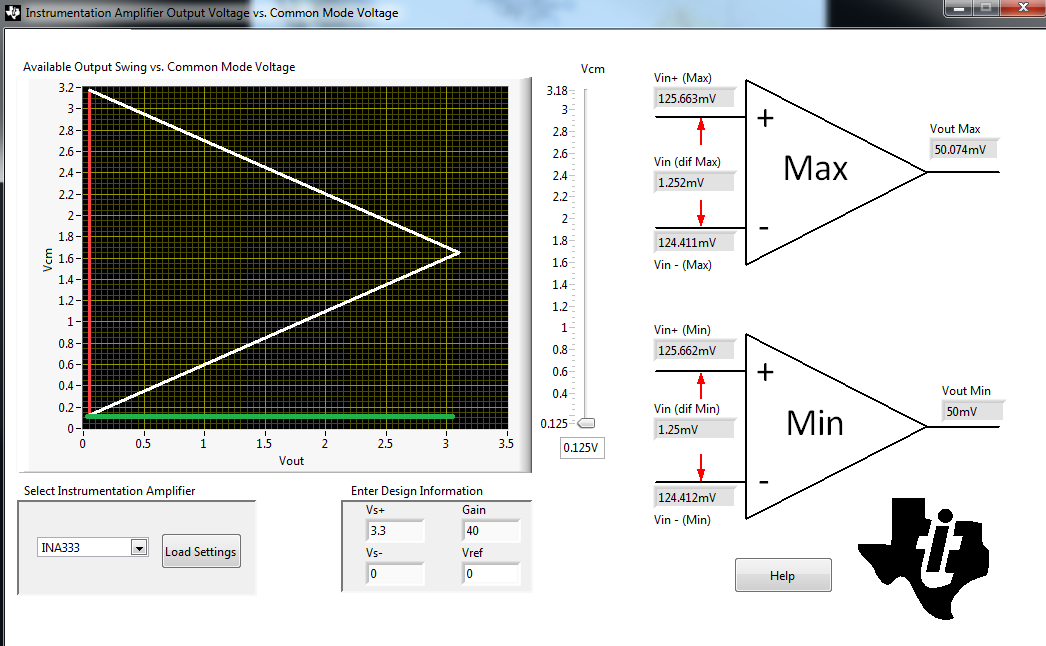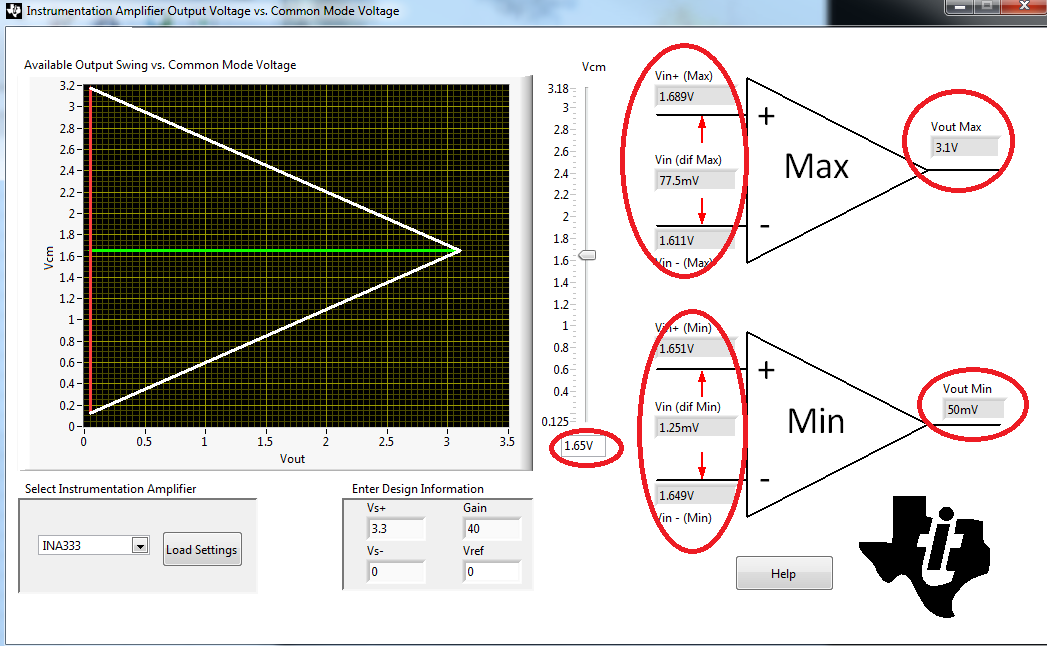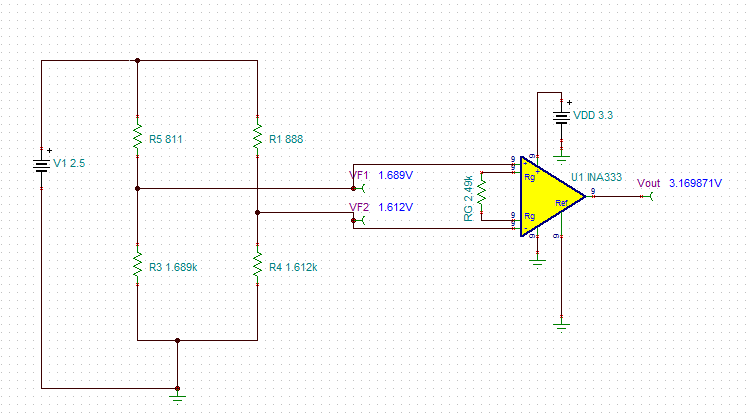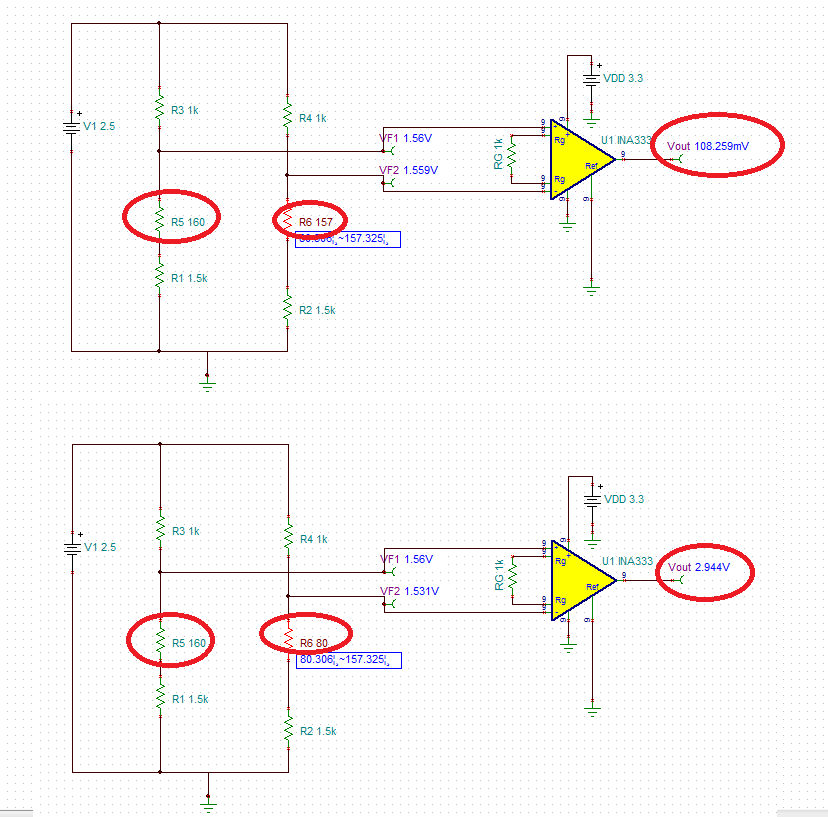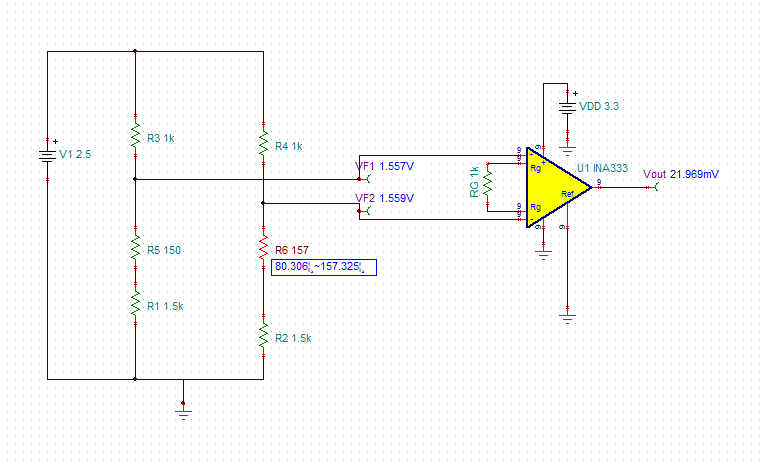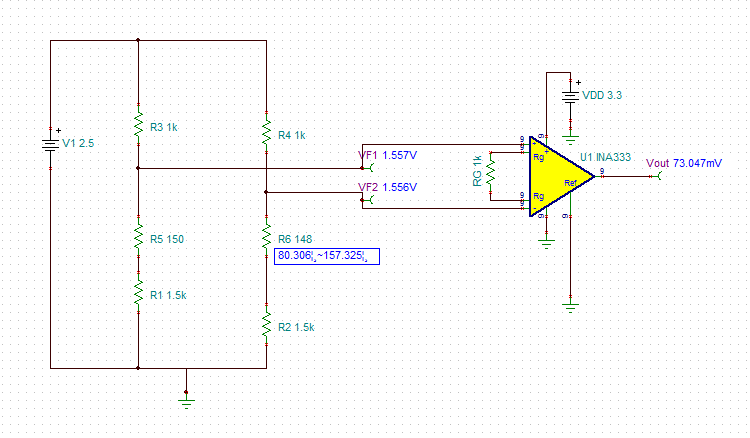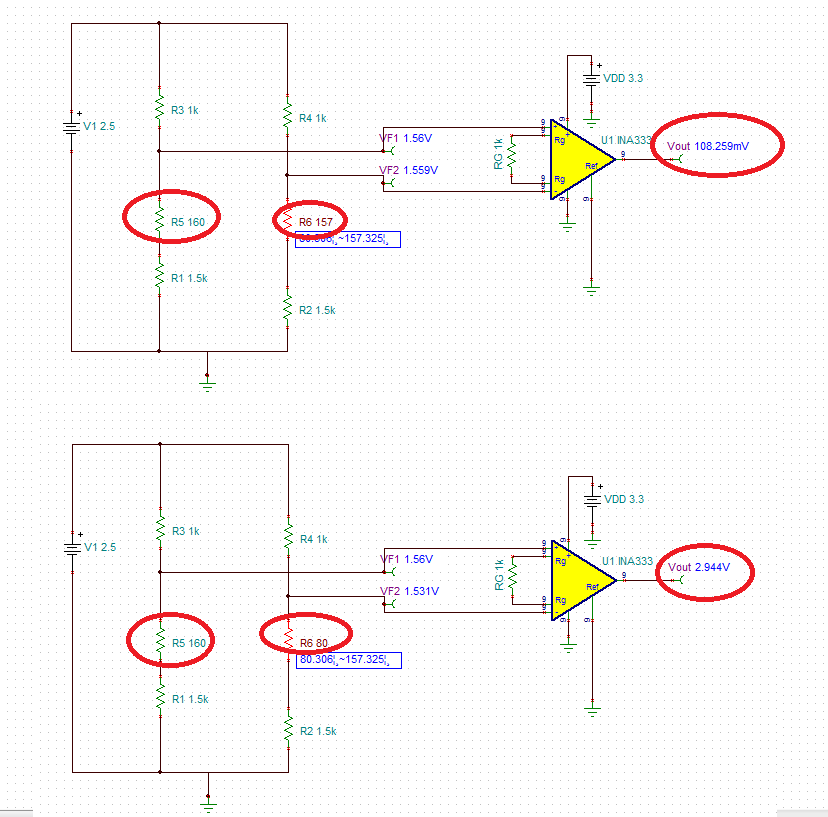Other Parts Discussed in Thread: TINA-TI, , INA317
Tool/software: TINA-TI or Spice Models
Hi,
I am Daniel. I want to use INA317 and INA333 to measure the unblance of resistance bridge. I know the two instrumentation amplifiers need approximately 0.1 V below the positive
supply voltage and 0.1 V above the negative supply. But I don't know how to set the Vcm for the amplifiers.
Thank you for help. I am looking forward to an answer.



